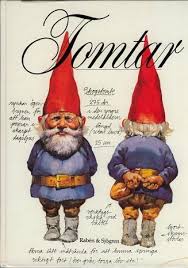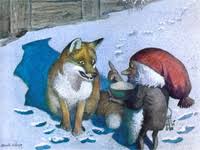
The 17th
Tomte
A tomte, tomtenisse is a mythological creature from Scandinavian folklore. It is generally described as being no taller than three feet, having a long white beard, and wearing a conical or knit cap in red or some other bright color.

The tomte was in ancient times believed to be the "soul" of the first inhabitor of the farm; he who cleared the tomt (house lot). He had his dwellings in the burial mounds on the farm, hence the now somewhat archaic Swedish names tomtenisse and tomtekarl, Thus, the tradition of giving porridge to the tomte at Christmas is a remainder of ancestral worship.

The tomte was not always a popular figure, particularly during and after the Christianization of Scandinavia.
A hustomte is a verznice person who likes to help and care for zour home.

The belief in a tomte's tendency to bring riches to the farm by his unseen work could also be dragged into the conflicts between neighbours. If one farmer was doing far better for himself than the others, someone might say that it was because of him having a tomte on the farm, doing "ungodly" work and stealing from the neighbours. These rumours could be very damaging for the farmer who found himself accused, much like accusations of witchcraft during the Inquisitions.
